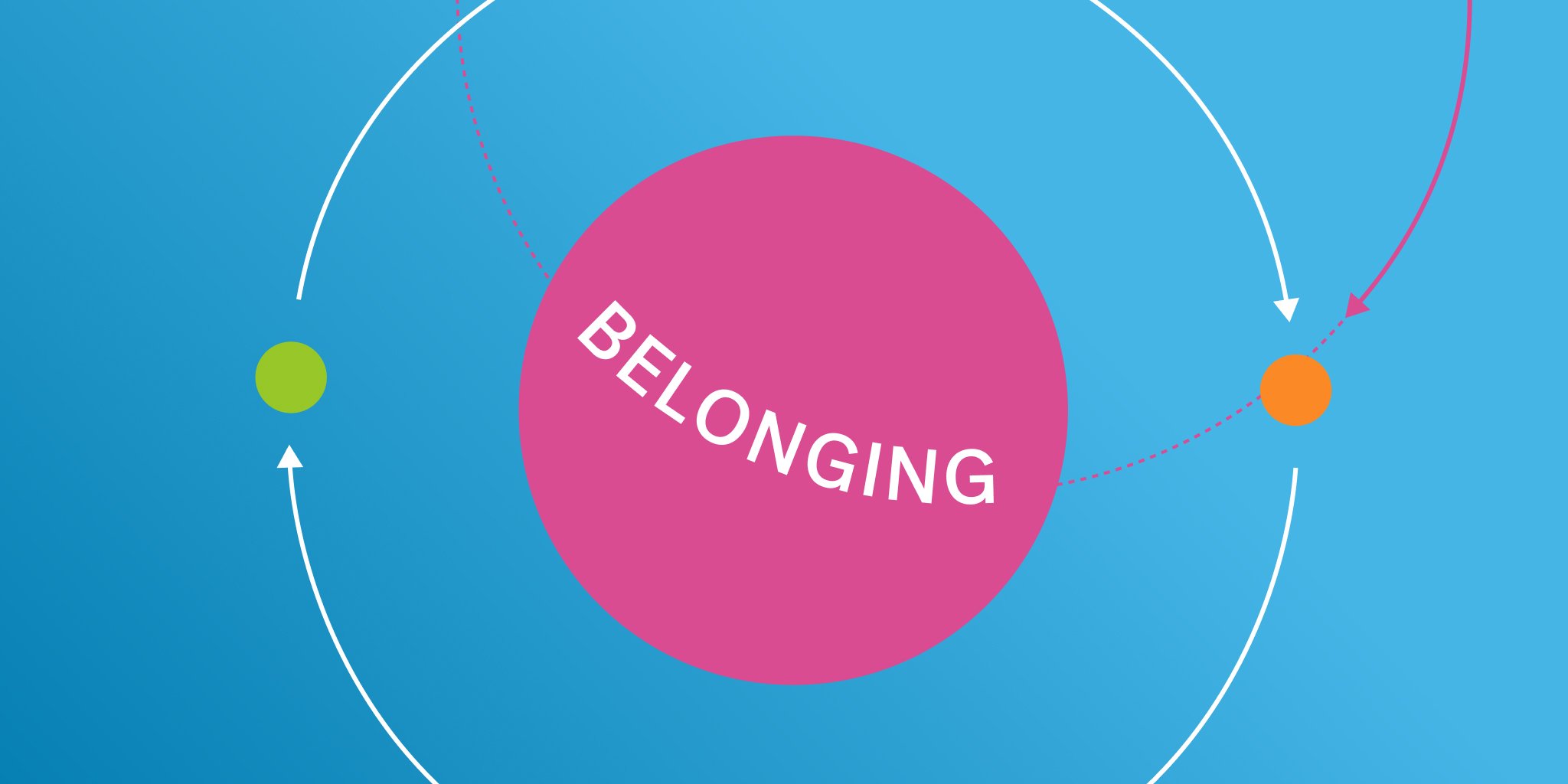Building a “flywheel” of belonging in your organization

At Textio, we spend every day meeting with teams who are at different stages of their journeys toward building diverse, equitable, and inclusive workplaces. Some have spent years and dedicated entire departments to advancing DEI initiatives, while many others are just getting started.
Wherever you are in your journey toward creating a workplace where every employee feels welcome and valued (a journey you’re always traveling), it’s helpful to think about how all of your efforts and investments fit together in a cohesive system, building towards your goals. Otherwise, it can be difficult to see how any individual program is contributing over the long term.
The Flywheel of Belonging is a framework we’ve developed at Textio for thinking about how to create and sustain a culture of belonging in an organization. It is a virtuous cycle of practices, communications, policies, and accountability structures that fosters inclusion and creates an environment that appeals to people who hold inclusive values themselves. The flywheel accelerates as these folks join your team, who bring with them the values that reinforce every member’s feelings of belonging.

Every component of the flywheel forms an essential piece of the loop; there is no “right” place to start, nor is there a “silver bullet.” Rather, by understanding each piece of the flywheel, the ways they contribute to belonging, and the types of investments that ladder into each, you can take stock of your own efforts and identify areas of focus that will strengthen the entire system.
Let’s break it down:
Practices: Often set from the top, then shaped and reinforced by every person’s actions, these are the inclusive values, norms, and behaviors that make every person on your team feel like they are seen, valued, and empowered to thrive. Examples: company values, leadership principles, recognizing and celebrating success, embracing social identity and being mindful of the ways it influences each person’s experiences and perspectives
Communication: How we communicate with each other—in person, on video calls, and in writing—sets the tone of our culture and reflects our true values as an organization. Communication plays a fundamental role in determining whether current employees feel like they belong, and whether potential employees feel welcome. Examples: multicultural and growth-mindset language, interrupting biased and harmful language, having a culture of openness to DEI conversations, inclusive and equitable meeting facilitation
Accountability: Healthy communication begets robust and transparent accountability systems, which help ensure we stay on top of our commitments. Examples: Setting DEI goals, tracking metrics and transparently reporting results, independent culture assessments, 365 performance reviews, inclusion surveys, employer reviews
Policies: Policies are all the benefits, programs, and resources that build diversity, create equity and foster inclusion—and they’re maintained through strong accountability structures. These are often some of the most visible investments in DEI. These highly visible policies also shine a light on the value of inclusive and equitable actions, and tend to strengthen commitments to inclusive practices across your entire team. Examples: benefits (i.e. caregiving leave, expanded healthcare coverage, flexible schedules), pay transparency, coaching and development programs, affinity groups and support resources, equity mindset trainings
Together, these four core components of the flywheel create a virtuous cycle that builds belonging in your organization as it goes.
People who value inclusion want to work for inclusive companies.
Most importantly, this system accelerates by attracting inclusion-minded people. Put simply: People who value inclusion want to work for inclusive companies. As inclusion-minded people join your team, they bring with them the values that strengthen and reinforce every member’s experience of belonging. Only by continuing to attract candidates and building a team of people who share the same inclusive values can you keep the flywheel of belonging spinning, and sustain the culture you’ve worked hard to create.
This is a modified excerpt from the guidebook "Rethinking your approach to inclusion." Download the full guidebook here.
Thanks to Eleanor Chestnut, Tim Halloran, Becky Auerbach, Andrew Violante, and Cassie Sanchez for their contributions.